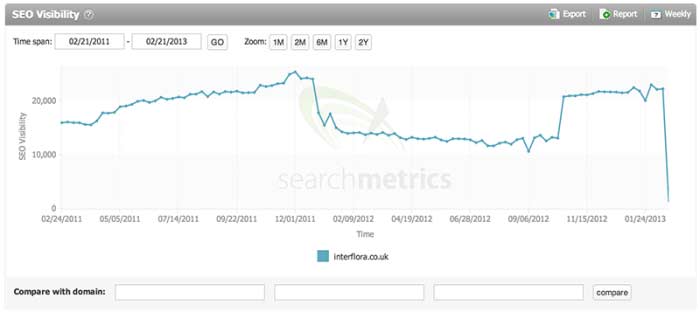UPDATE: Google announced that the Penguin update went live on Friday 23rd Sept, and that Penguin is now real time and has been incorporated into its main algorithm.
In October last year Gary Illyes, a trends analyst that works at Google, let slip that a new Penguin update would appear in 2015. It never arrived – but all the evidence points that it’s still on its way.

This is good news for Search Engine Optimisation (SEO) companies and marketeers that are optimising their websites for search engines the ‘right way’ (basically, following Google’s Webmaster Guidelines). For those that have been taking a more unethical approach to SEO though, the news might not be so welcome!
What Is Google Penguin 4?
Back in April 2012 Google made an update to it’s algorithm that it named ‘Penguin’. It was designed to identify websites that were spamming it’s search results by buying links (or getting links through link networks created to boost search engine rankings).
It had an immediate and significant effect. Sites that weren’t playing by the rules suddenly disappeared from search results, and many websites were notified of manual penalties that had been applied to their search engine rankings – either demoting them many pages down, or removing them entirely.

Since then, there have been a number of further ‘Penguin’ updates made. Each time the there are significant changes to the search results – with generally, the sites that are approaching their marketing fairly seeing positive results and those trying to game the system being negatively impacted.
Penguin 4 is the name that’s been given to the next big update that’s will focus on combatting ‘spammy’ linking.
With Penguin 4 changes become real time
Each time a new Penguin Update gets released, websites previously penalised that have worked to remove bad links (for instance through the Google disavow links tool) can regain rankings and, equally, sites that have not previously caught might get trapped.
The downside of this, is that it takes a fairly long time for the effect of changes to a website (whether positive or negative) to reflect in search results. Sites that have been penalised (whether fairly or unfairly) have to wait a long time before they can recover, and some companies are still finding quick wins by using spammy techniques in the gaps between updates.
Penguin 4 is rumoured to look to address these problems by introducing a real-time element to the algorithm – effectively meaning that the Penguin portion of the algorithm will always be “on” and updating, processing information about new links in real time and making adjustments accordingly.
This should mean that Google will catch spam link profiles more quickly and allow companies that have identified and resolved issues to recover faster.
When’s Penguin 4 coming?
Well, we’re still waiting right now, but the signs are its imminent.
After the news broke last year that Penguin 4 was coming, the SEO community, have been watching carefully for the effect of it hitting. After being questioned when Penguin 4 didn’t appear in 2015, Gary Illyes reported in January that we were “weeks away” from seeing the next iteration.
@mrjamiedodd I'll go with weeks. We're aiming for launching penguin this quarter, but we don't have a more precise timeframe.
— Gary 鯨理/경리 Illyes (so official, trust me) (@methode) January 19, 2016
However as of today, there’s still no sign and Google have confirmed it’s not live yet. Gary’s said he’s now not giving out any more dates for fear of being wrong should it be missed again because it’s not quite ready.
Why the delay? Well, we’re not sure, but the general consensus is it looks like Google’s taking it’s time to get it right – which, given the wide ranging effect these updates have, is a good thing!
What does this mean for me?
If you run a website, you might be wondering what a real-time Penguin algorithm means for you, or what you should be doing to prepare for the update.
Firstly, if you’re not already doing it, rather than trying to game search engines, focus on creating quality content. Earn links and don’t buy them. Focus on providing the best user experience you can and, rather than fixating on your rankings, allow them to improve naturally.
Secondly, it’s worth making sure that there aren’t any problems with the links that you’ve already got pointed towards your website (and if you’ve ever purchased links on Fiverr or have engaged the services of someone who emailed offering cheap SEO services – this is ‘must do’).
Checking and cleaning backlinks
Making sure that the links to your website from other sites across the Internet aren’t going to cause you a problem is fairly straightforward:
1. Create a comprehensive list of backlinks
There are lots of tools available on the web to help with this, but it’s worth using as many sources as possible to get a comprehensive list and then de-duping. Google Search Console is a great place to start, but Majestic.com, Open Site Explorer and Ahrefs.com are pretty good too.
2. Look for patterns
Once you’ve got your list of links look for indicators that unnatural practices have been used. This could be the same Anchor Text repeatedly used, similar dates that backlinks were created, or the same IP address being used.
3. Remove or Disavow suspect links
If there are websites that are suspect, its time to remove them. It might sound painful, but it’s better to remove low quality links before anything happens, rather than after you’re penalised.
Start off by asking site owners to remove or ‘nofollow’ the links, sending messages via the sites’ contact forms or their registered owner (you can find this out through Whois).
After you’ve done this, you can use Google Search Console to disavow those that remain.
If you’re concerned about your site being impacted and want some expert help, get in touch. We’ve got tons of experience with helping companies that have run into trouble and can give you clear advice and assistance to get things fixed quickly.